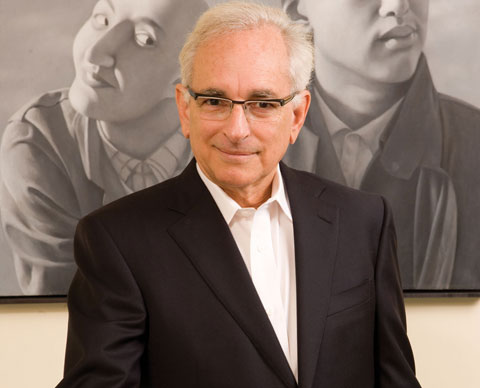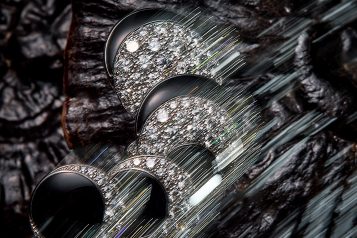Howard Farber can be credited with the ‘discovery’ of Chinese Contemporary art. His latest venture involves spreading la palabra of Cuban Contemporary artists through a museum exhibition that is as emotional as it is powerful
By Stephanie Wilson I Photography by Josh Lehrer
“I had the same visceral reaction that I had thirty-five years ago, and I realized that some of these contemporary artists were going through the same circumstances as the modernist Americans of the first decade.”
Not many collectors can claim that they had art on their walls before a couch touched the floors, yet when it comes to Howard Farber, it is not a surprise. In fact, nothing is much of a surprise. Not only can Farber be credited with a Top Ten Billboard hit from 1966 as the drummer on Napoleon XIV’s track They’re Coming to Take Me Away, Ha-Ha!, a sweeping real estate career adds another notch to this diverse man’s belt. Through it all, one thing has remained true: art is his passion. “I must have been a museum curator in a past life!” he claims, followed by a chuckle that inspires a great smile. Indeed he must have been. There are few people in history that can claim such foresight when it comes to art collections as Howard Farber.
If you believe that is a sweeping statement, be rest assured that it is meant to come across that way. Howard Farber, despite no formal art training, has more than just an eye for picking out pieces; he has more of a profound vision when it comes to collecting.
His collection began innocently enough more than 35 years ago when he stumbled upon an auction of American Modernist Paintings at Sotheby’s. Something about the works from that period spoke to him, and he purchased some pieces. He began working with local galleries, honing his eye and adding to a rapidly growing collection. Unfortunately for Farber, it wasn’t long before the rest of the country caught onto the wonders of the American Modernist period. As the market for these artists exploded, so did their prices. Suddenly, works that he had paid $5,000 for increased to $50,000, then to $500,000. While many collectors would be thrilled about the increase of value of their collections, for Farber, art is about so much more. “As a collector, I never try to play it safe. Some people just buy names to decorate their homes. I don’t do that, I go for the art that talks to me.”
During a trip to Asia in 1995, a new form of art began speaking to him: Chinese Contemporary. “I walked into a gallery in Hong Kong, and I freaked out, because I was exposed to Chinese Contemporary art for the first time. I had the same visceral reaction that I had thirty-five years ago, and I realized that some of these contemporary artists were going through the same circumstances as the modernist Americans of the first decade.”
When pressed, Farber explained that these were economic and political changes that were reforming the nation, much as in America in the early 1900’s, although he claims that there is no political motivation for his collections. He began filling his home with exquisite works of Chinese Contemporary art, and became very involved with the artists’ community, going so far as to open a gallery in Beijing. His collection expanded to the iconic level, but he is quick to explain, “It’s not about the number of pieces one has. People can say, ‘Oh, I have eight hundred pieces,’ but if it looks like my granddaughter did it, it doesn’t matter!”





















